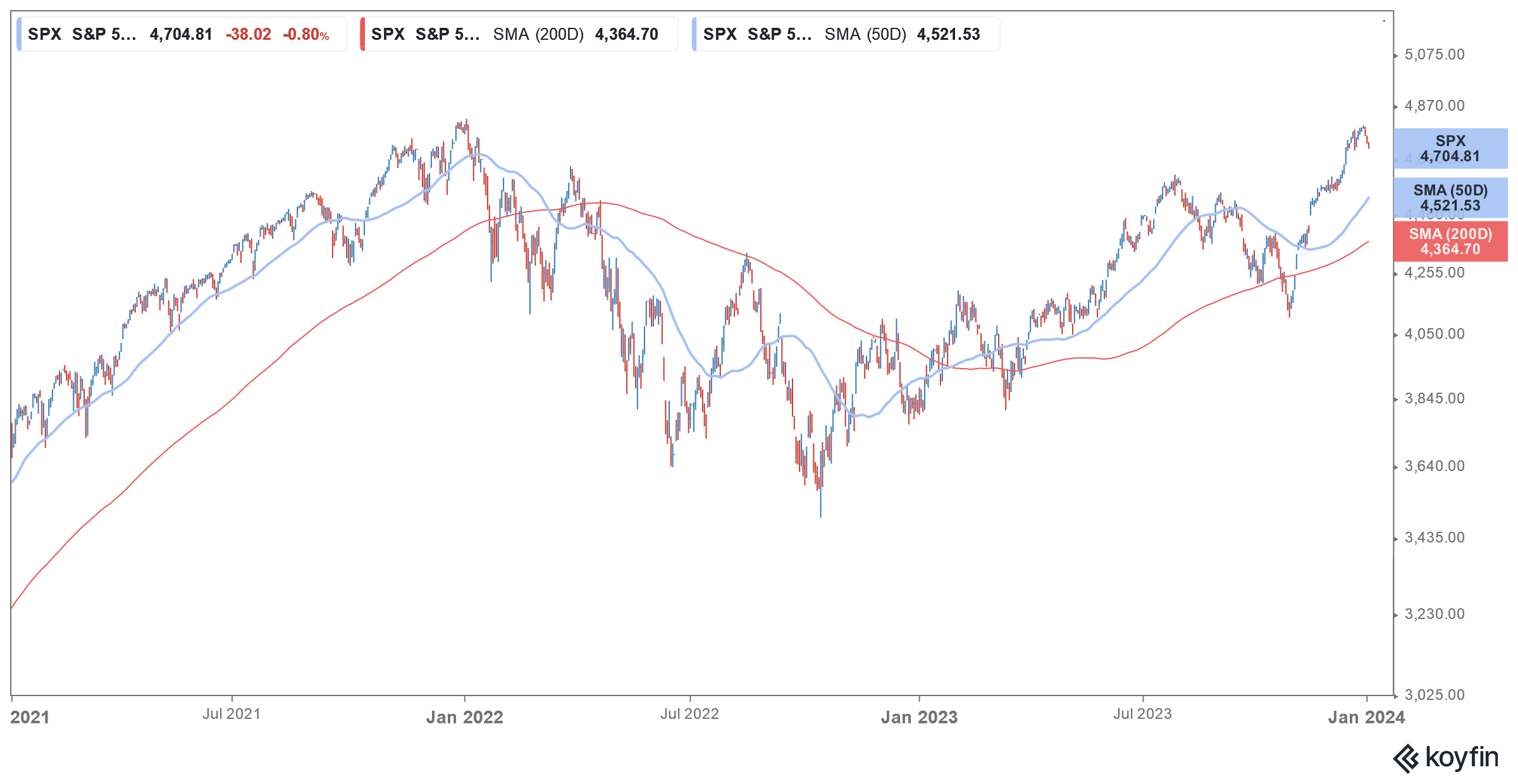
The US Fed released the minutes of its December meeting yesterday which showed that while members see the tightening cycle as over, they are not certain about the timeline of rate cuts.
At the December meeting, the US Fed kept rates unchanged as was widely believed and the dot plot called for 75 basis point rate cuts in 2024. While traders expected more rate cuts in 2024, the December meeting was nonetheless the first time in this cycle that the US Central Bank talked about rate cuts after having previously denied the possibility on multiple occasions.
Fed started raising rates in March 2022
The Fed has been on a rate-hiking spree since March 2022. It raised rates by 25 basis points in March 2022 and by 50 basis points in May. In the next four meetings, it raised rates by 75 basis points each before lowering the pace of hikes to 50 basis points in December.
The US central bank raised rates four times in 2023 by 25 basis points each. Currently, the Fed fund rates are 5.25%-5.50% which is the highest since 2001. Amid the Fed’s rate hikes, the yields on the 10-year Treasury spiked to 5% last year for the first time since 2007. The yields since came and were around 3.8% at the end of 2023 but have since risen above 4%.
Key takeaways from Fed’s December minutes
The Fed minutes said, “In discussing the policy outlook, participants viewed the policy rate as likely at or near its peak for this tightening cycle, though they noted that the actual policy path will depend on how the economy evolves.”
The minutes further said, “Several participants remarked that the Committee’s past policy actions were having their intended effect of helping to slow the growth of aggregate demand and cool labor market conditions. They judged that, in combination with improvements in the supply situation, these developments were helping to bring inflation back to 2 percent over time.”
Notably, the Fed’s aggressive rate hikes coupled with the steep fall in oil and gas prices have helped tame US inflation. The annualized CPI, which peaked at 9.1% in June 2022 has since fallen to 3.2%.
Incidentally, in 2020, the Fed changed its approach and now targets an average inflation of 2%. The mandate gives it more leeway in deciding on monetary policy, unlike the previous framework where it strived to keep inflation below 2% at all times.
Fed sees rate cuts in 2024
Meanwhile, the December minutes reiterated that the Fed sees rate cuts this year. The minutes stated, “In their submitted projections, almost all participants indicated that, reflecting the improvements in their inflation outlooks, their baseline projections implied that a lower target range for the federal funds rate would be appropriate by the end of 2024.”
However, the minutes added, that “participants also noted, however, that their outlooks were associated with an unusually elevated degree of uncertainty and that it was possible that the economy could evolve in a manner that would make further increases in the target range appropriate. Several also observed that circumstances might warrant keeping the target range at its current value for longer than they currently anticipated.”
The commentary on future rate hikes spooked investors and US share markets, especially growth names plummeted last year.
The US economy is expected to slow down
The Fed expects the US economy to slow down in the coming quarters. The minutes said, “Available indicators suggested that real GDP growth was slowing from its strong third-quarter pace, which had been led by a sizable increase in consumer spending.”
They added, “Real GDP was projected to increase more slowly than the staff’s estimate of potential over the next two years before rising in line with potential in 2026.”
Notably, while many economists feared a US recession in 2023, the world’s largest economy surprised with its resilience last year. Currently, most analysts predict a soft landing for the US economy in 2024 even as recession risks cannot be ruled out.
US shares rebounded in 2023
Meanwhile, 2023 was a good year for most asset classes including US shares. The S&P 500 rose 24% which was much higher than what analysts had forecast. However, US shares have fallen in the first two trading days of the year amid concerns over stretched valuations and economic outlook.
Most brokerages are cautious about the market outlook for 2024 and even some of the bulls expect returns to be in single digits. Sarat Sethi, managing partner at DCLA said, “I do think valuations are stretched, and I think the key here is that the market is so dependent on the Fed. Because that was the pivot for equities to go up. I think you’re not going to get multiple expansion, you have to have earnings growth, and we still have some geopolitical uncertainty out there.”
Fed could pivot to rate cuts in 2024
He added, “Things are priced to perfection, especially the Mag 7. And they can perform just fine, but I think there’s opportunities elsewhere, and I think you have to be careful after a 24% run [for the S&P 500].”
That said, some of the brokerages have raised their 2024 guidance for US shares and Goldman Sachs raised its 2024 S&P 500 forecast to 5,200. However, not all brokerages believe that the world’s most popular index can close above 5,000 this year and Morgan Stanley expects the index at 4,500 by the end of the year.
Coming back to the Fed, the US Central Bank’s next meeting is scheduled for later this month and over 90% see a status quo on rates, according to the CME FedWatch Tool. However, almost 40% of traders see Fed fund rates at 3.75%-4.0% by the end of 2024 while nearly 30% see rates between 3.50%-3.75%.
In contrast, the 75-basis point rate cut that the Fed December dot plot calls for rates to be between 4.50%-4.75%. Markets however believe that the Fed would cut rates much more sharply and nearly all traders see rates below the levels that the dot plot calls for


Question & Answers (0)